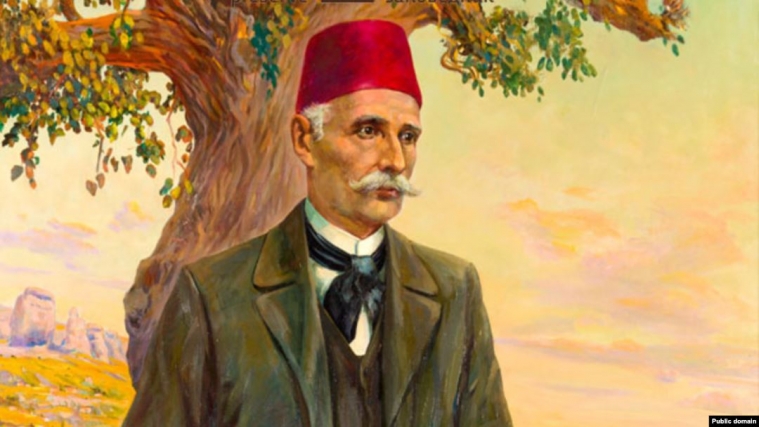Tugay Bey
Commander and Statesman Tugay-bey (aprox. 1601 - 1651) occupied a special place in the centuries of political relationship between Ukraine and the Crimea. Being an active participant in the Ukrainian Liberation War, Tugai Bey, who had extensive military experience, became the best of all possible allies for Bohdan Khmelnytsky. At the decisive moments of the battles, the Tugay-bey’s Crimean Tatar cavalry effectively supported the Zaporizhzhian infantry by conducting round-the-clock maneuvers and unexpectedly attacking the enemy. In the battles of Zhovti Vody and Korsun, elite Polish armies were devastated by the coherence and cooperation of the Ukrainian and Crimean troops. Bohdan Khmelnytsky and Tugay-Bey were connected not only with common interest but also with the real bonds of brotherhood. The Ukrainian hetman said about the Crimean Tatar commander as follows: "Tugay-bey is close to me, he is my brother, my soul." We know what Tugay-bey was like on the battlefield, from the story of the Crimean historian Kirimli Haji Mehmed Senai: "Tugay-bey and similar to him brave heroes, were charging at the huge siege guns, shouting" Allah, Allah! "," Allah, Allah! ", glorifying the name of God. They all together attacked with sabers, and most of them, trusting in the Lord, like predatory lions, got into the dragon's mouth, shooting out flames, and cherishing a wonderful dream in their hearts to fulfill the promise "either victory or death". They attacked from the right and left, at the centre, and from flanks, with strong swords like dazzling lightning, striking vicious dogs." Tugay Bey was killed in 1651 during the tragic battle for the Ukrainian people near Berestechko. After his death, relations between Ukraine and the Crimean Khanate had been deteriorating gradually that eventually led to a breach of relations between these states. But the remembrance of this union is still a source of pride for many Ukrainians and Crimean Tatars.
Ismail Gasprinski
Ismail Gasprinski is a prominent Crimean Tatar educator, public figure and scientist (1851 - 1914). He is one of the most prominent representatives of the Islamic revival of the late XIX, early XX centuries. A native of the Crimean village Avdzykoi, and a graduate of the Simferopol high school, Gasprinski quickly went beyond the Crimea, establishing contacts with Muslims from Europe, the Ottoman Empire, the Volga region, the Caucasus, Central Asia and the Middle East. Gasprinski had to start developing an education system for the oppressed Turkic peoples in the Russian Empire, literally from nothing. The first issue of Tergiman (Translator), published in 1883, was very important for the entire Muslim aristocracy of talent in many countries of the world. Subsequently, a media holding was established on the basis of that newspaper. They were publishing newspapers and magazines that gained popularity far beyond the Crimea. Ismail Gasprinski's new approaches to the educational process ushered in the new school of thought called "Jadidism". Gasprinski sought to combine traditional Islamic education with new approaches developed by European pedagogy. The success of his educational projects proved the effectiveness of the Gasprinski system and its good perspectives. No wonder, the works of the Crimean Tatar educator were popular in the Islamic world even decades after Gasprinski's death. By the early twentieth century, Ismail Gasprinski had managed to bring together the group from Muslim figures who were aiming to educate the general public on the basis of Jadid ideas. In 1905, they established the organisation Butyunrusie Ittifak al Muslim, which in fact became the first legal Islamic party in the Russian Empire. The party aimed to get done with discrimination against the Muslim population, as well as to promote development of culture and education worldwide. Ittifak existed not a long time, and was forced by the authorities to cease its activities. Subsequently, many of its leaders became the founders of Muslim national organisations during the revolution of 1917.
Muhammad Asad
A boy from Lviv, who was born into a wealthy Jewish family, became religious and political Muslim figure of great influence. This transformation has long been some kind of a legend for Ukrainian Muslims. One has only to read the media to see the increasing role of Asad and his ideas in contemporary Ukraine life. Interesting in the East resulted for many Europeans in converting to Islam. But not many of them can be positioned as people who have influenced on the development of Islamic civilization. Leopold Weiss (1900 - 1992) was born in Lviv at the turn of two eras. Even having travelled around the world and become known as Islamic activist Muhammad Asad, he never forgot his homeland, devoting to it the warmest pages in the book of memoirs and thoughts “The Way to Mecca”. This work, published in 1954 and translated into many languages, was met with great interest not only among intellectuals and lovers of something new. It helped Europeans to understand better the religion that came into focus of people all over the world by the end of the twentieth century. It is no exaggeration, to say that most leaders in the modern world learn about Islam, among other things, due to the Muhammad Asad’s books. It may sound strange, but among the last in Europe, who learnt about Assad’s work heritage were his fellow countrymen. Only last year his most famous work “The Way to Mecca” was published in Ukraine. Ukrainians have yet to get acquainted with Asad’s works. Among his works, which are on the list of the most important, a special place is occupied by Asad's comments to the Qur'an, as well as a work about Sharia state aspects. Probably, in the future, the way to Mecca, the Hajj of many Ukrainian Muslims, will begin in Lviv, the city that gave the outstanding writer and thinker of our time to the world.
By Oleksandr Stepanchenko




